Final PRE and Submission

-Every group should choose the same subject/topic. Each student should make the PPT slides within 8-15 pages, and every group member should complete his/her PREs within 4-5 minutes.
The group leader is in charge of collecting and saving all the PPT slides of your group members onto the classroom computer desk before giving the final PREs on June 28, 2021.
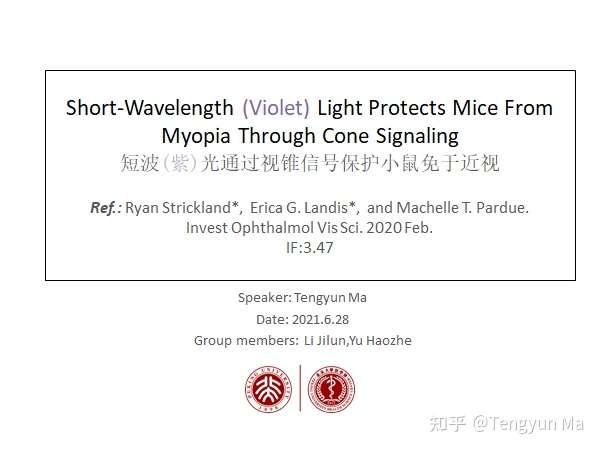


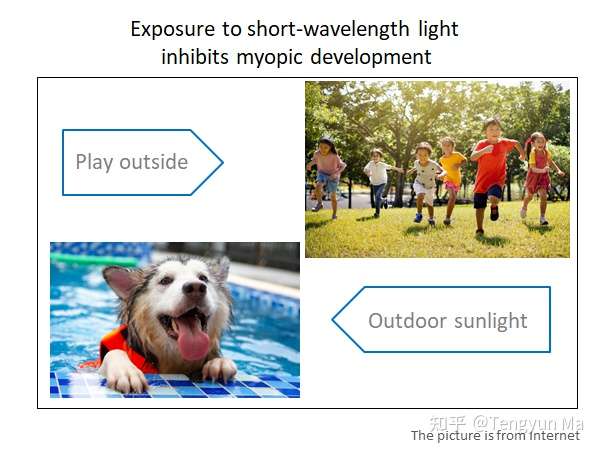
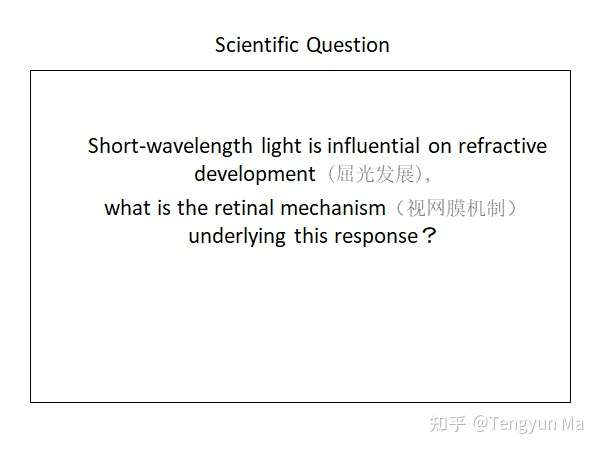
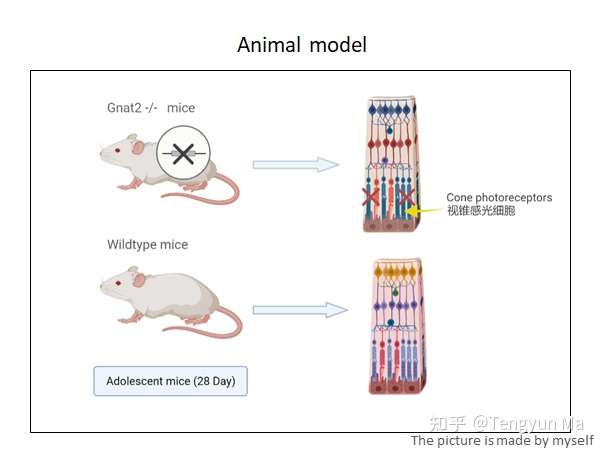
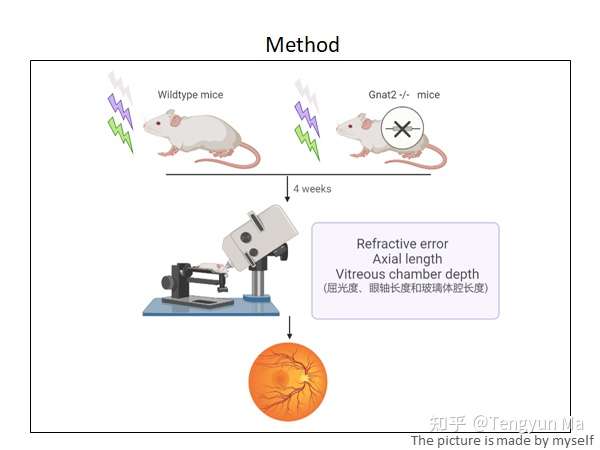
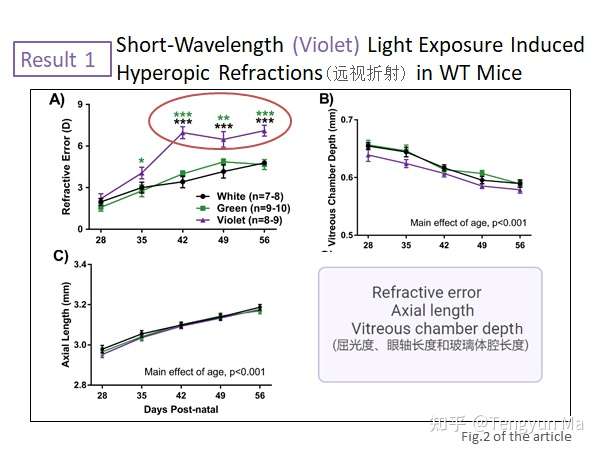
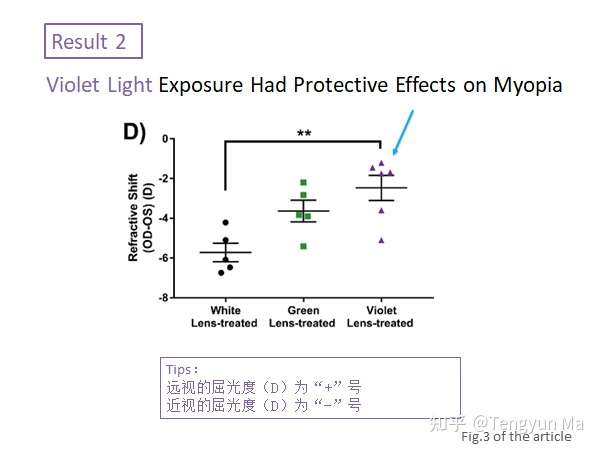
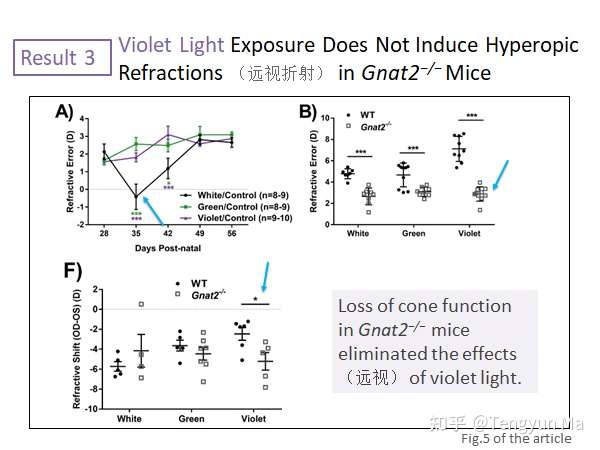
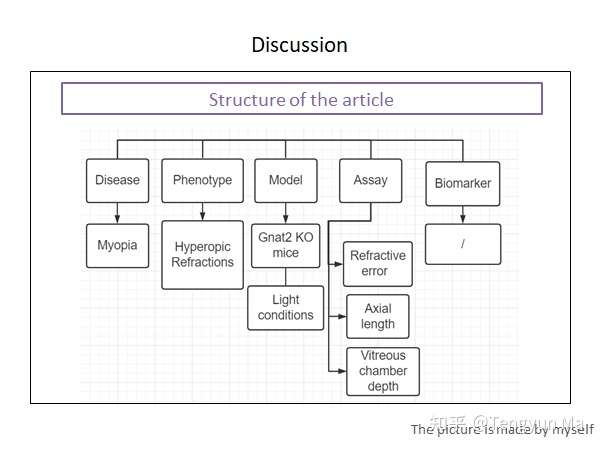
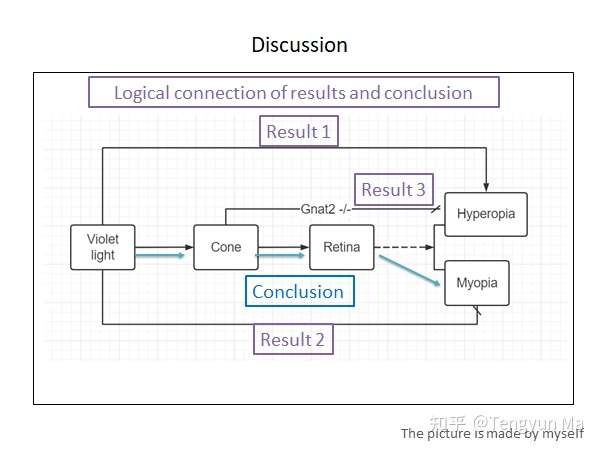
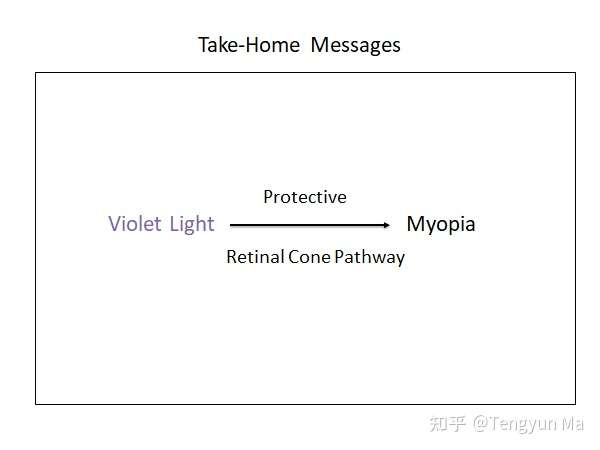
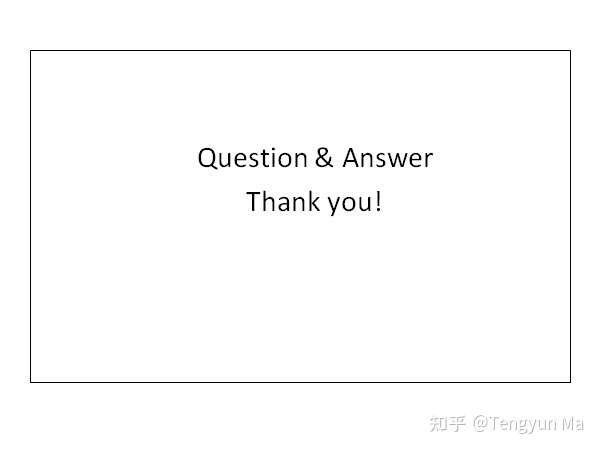
1.Good morning/afternoon ladies and gentlemen. It's a pleasure to be here today. I’m Ma TY of group2, my group members are li JL and Yu HZ. I’m going to talk about *Short-Wavelength (Violet) Light Protects Mice From Myopia Through Cone Signaling.*
2.My talk will be in 5 parts. First of all, I'll be presenting the background and The scientific problems in this study. Then, I will analyze the results of experiments based on animal models. Finally, Let's look at the structure of the experimental design. And How did the authors derive conclusions from the experimental results
3.Myopia,also known as short-sightedness is an eye disorder where light is focused in front of the retina. If you’re short-sighted, distant objects such as road signs won’t be clear, and nearer objects like your phone or computer screen will be much clearer.
\4. Experimental evidence suggests that exposure to short-wave light inhibits the development of myopia. For instance, bright, outdoor light exposure in children can be protective against short-sightedness. Similarly, high lighting has slowed the progression of myopia in animal models.
Outdoor sunlight has more intense short-wavelength radiation.
5.So, first, Short-wavelength light is influential on refractive development (屈光发展),
what is the retinal mechanism(视网膜机制) underlying this response?
\6. Researchers use gene Knock out animal models. Gnat2−/− mice have a missense mutation that affects cone photoreceptors, effectively preventing the phototransduction cascade within cones.防止锥体细胞内的光传递级联。
\7. Wild-type and AGnat2−/−mice were exposed to one of three different light conditions: broad-spectrum “white”, medium wavelength “green”, and short-wavelength “violet”. All mice were exposed to the light for 4 weeks; they were measured weekly for refractive error and axial parameters.
\8. Now that we have seen The experiment design, let's look at some of its results.
I'd like you to look now at a graph of Refractive development of WT mice housed under three light conditions. This line chart presents violet light exposure significantly increased the degree of hyperopia after 1 week. There were no significant differences in vitreous chamber depth and axial length among the different light exposure groups.
\9. Next, we'll look at the fig showing that the refractive shift of mice exposed to violet light was significantly smaller when compared with white light. It seems to me that Violet Light Exposure Had Protective Effects on Myopia.
10.Finally, This graph compares the refractive error of control WT and Gnat2−/− mice.
In Fig A ,mice exposed to white light showed an unexpected dot on day 35. By day 49, there were no significant differences in refractive errors between any light group.
In Fig B, The refractive error of Gnat2−/− mice was significantly lower than WT mice exposed to the same lighting conditions.
In Fig F, Gnat2−/− mice had a similar response in all three lighting conditions, departing from WT mice that showed reduced myopia under violet light.
In conclusion, Violet Light Exposure Does Not Induce Hyperopic Refractions (远视折射) in loss of function Mice.
11-12 Next, we'll look at a flow chart showing the structure of the article. The disease is myopia, Models, assays, and biomarkers are used to describe specific disease phenotypes. There was no biomarker in this study.
To conclude then, these findings show that short-wavelength light-producing hyperopic responses in mice (R1), slow refractive eye growth, and inhibiting myopia(R2).
The loss of function mouse model suggests that cone signaling plays a role in the hyperopic response to short-wavelength (violet) light(R3). The blue pathway is the conclusion.
13 You may remember I began my talk today with a question "...?" As I end, I hope we are a little closer to an answer.
14 I hope that was clear. If you do have any questions, please don't hesitate to ask them. Thank u